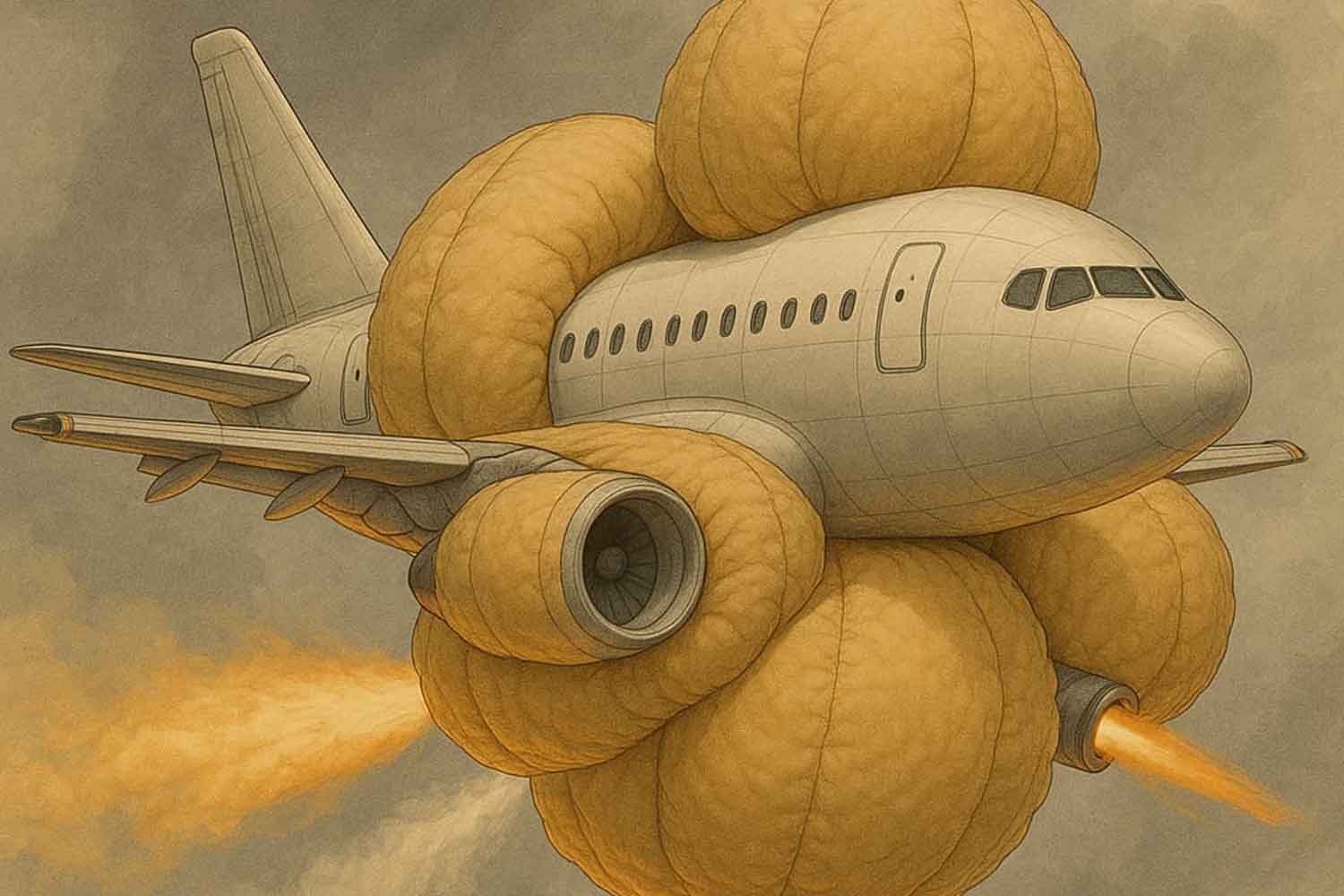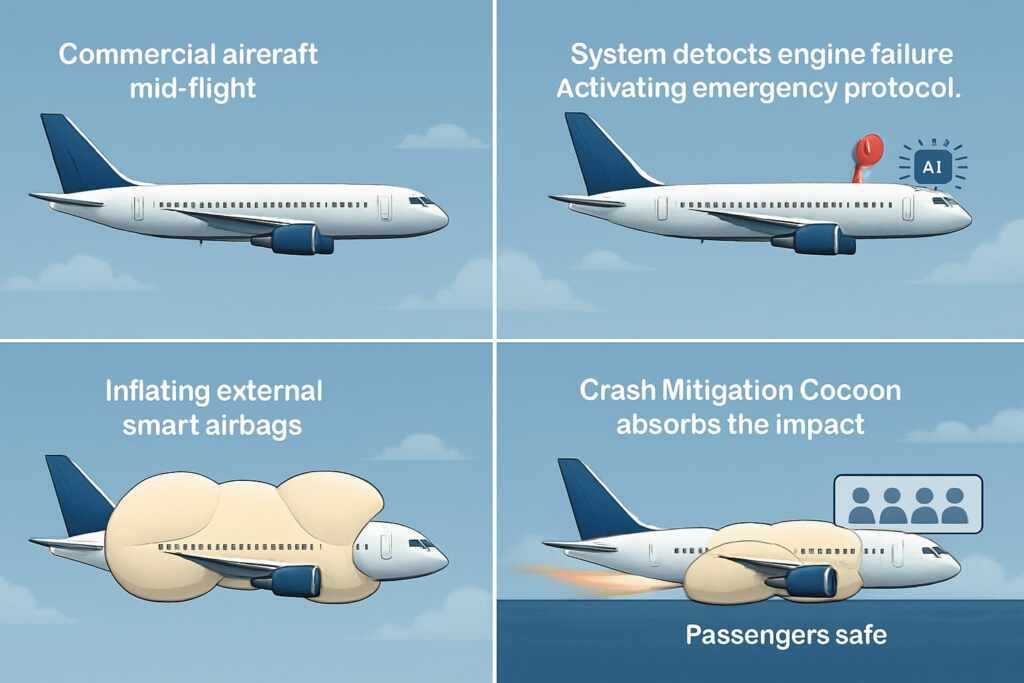REBIRTH, an experimental airbag system for airplanes, aims to make survival possible even after catastrophic failures. Born from tragedy, it blends engineering with human resilience.

©James Dyson Award
Air travel is, by the numbers, the safest means of transportation in the world. Yet in those rare, almost unimaginable cases when an accident does happen, the chances of walking away alive are close to zero. It’s one of those truths everyone knows, but few want to dwell on. Two young engineers, however, decided to stare it in the face and ask the uncomfortable but necessary question: what if there were a way to survive even when everything else fails?
That single question gave birth to REBIRTH, an active safety system that deploys enormous airbags around the fuselage just seconds before impact. The idea is to soften the crash and increase the odds of survival. It sounds like something from a sci-fi film, but it has already caught the attention of experts and international media.
The airbag idea was born after a crash
It all began with a real tragedy: Air India Flight 171, departing from Ahmedabad to London, crashed just 30 seconds after takeoff. A sudden failure in the fuel control shut down the engines, and the aircraft went down. Of the 242 passengers, only one survived.
One of the inventors, Dharsan Srinivasan, recalled how his mother could not stop thinking about the terror the passengers must have felt in those final moments. The same was true for the mother of Eshel Wasim, the other engineer behind the project. Both decided to channel that sense of helplessness into concrete action, as they explained in their application for the James Dyson Award, one of the world’s most prestigious prizes for technical innovation.
“There is no system that helps people survive after something has already gone wrong. This haunted us.”
That haunting became REBIRTH. The acronym means “rebirth,” of course, but for them it’s an engineering answer to human grief. A way of saying that even after every other safety system fails, there can still be a chance.
REBIRTH: airbags, sensors and artificial intelligence

The way REBIRTH works is surprisingly simple. From takeoff to landing, the system monitors the flight through sensors tracking altitude, speed, engine status and pilot actions. If it detects an imminent and unavoidable crash below 3,000 feet (914 meters), it activates automatically.
In less than two seconds, massive airbags inflate from the nose, tail and underside, transforming the fuselage into a giant protective cocoon. They are built from ultra-resistant materials such as Kevlar, Zylon and TPU, and coated with non-Newtonian fluids that stiffen on impact.
According to the engineers’ simulations, the system could reduce crash forces by 60%. If the engines are still running, reverse thrust kicks in, slowing the aircraft by 20%. If the engines are dead, gas-powered thrusters stabilize and decelerate the fall.
Once on the ground, REBIRTH triggers an emergency beacon with GPS, flashing lights and high-visibility orange paint to help rescuers find survivors quickly.
“REBIRTH activates only when everything else has gone wrong. It’s the last chance.”
Innovation meets obstacles
For now, REBIRTH exists only in simulations and in a 1:12 scale prototype, controlled by microprocessors and CO₂ cartridges. The two engineers have developed detailed schematics, material data and crash-test plans, but scaling it up will require industrial partners and specialized labs.
Meanwhile, aviation experts remain cautious. Jeff Edwards, a former U.S. Navy pilot, pointed out that installing such large airbags on every aircraft would mean a significant weight increase and possible aerodynamic complications. And in aviation, where every pound matters, that’s no small issue.
“To prevent one accident every twenty years, we would have to accept a daily compromise in costs and fuel consumption.”
It’s not the first time visionary ideas have emerged to improve in-flight safety. Some light aircraft are fitted with parachutes, NASA has tested self-healing coatings against lightning strikes, and Airbus once patented a hatch to eject hijackers. But REBIRTH is different: it doesn’t try to avoid the accident, it tries to make survival possible when it’s already too late.
The idea comes from lived experience, from the human need to act rather than remain powerless in the face of tragedy. Whether or not the technology ever becomes reality, the question remains as pressing as ever: is it truly impossible to survive a plane crash?
SOURCE: Popular Science – James Dyson Award
